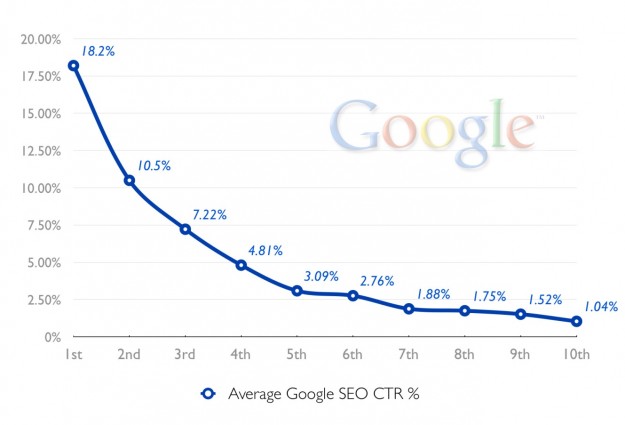The SEO landscape has changed. Are you implementing out-dated SEO strategies that will hurt your search engine rankings?
Link-building and keywords aren’t as effective as they use to be. As marketers, we must stay updated with the most effective SEO practices so we can drive more traffic to our sites without being penalized.
With that said, here’s my top 10 list. To build anticipation, I’ll start in reverse order.
Top 10 SEO tactics that will no longer work for you
10. Keywords Need to Be An Exact Match.
Stuffing an article with keywords is like stuffing your pants. It may increase attraction at first glance but when its time to deliver value, you may fall short.
Keywords do not need to be repeated verbatim throughout a piece of content. When developing a headline, it’s always best to construct it so it makes sense to your audience.
Tip: Keeping the headline somewhere between 4-10 words is best.
9. Meta Descriptions Impact Search Rankings

Meta descriptions concisely explain the content of webpages and show up underneath a search engine result. Naturally, you will think Google takes this into account when displaying a users search result. Unfortunately, not so much.
Meta descriptions and meta keywords have no bearing on search rankings. However, I must note that it will certainly make a difference in your click-through rates.
Meta descriptions are similar to email subject lines. So, you should consider using a similar strategy when developing eye-catching subject lines as you create meta descriptions.
Simply put, the user’s behavior when scrolling down their email is similar to scrolling for search results with regard to searching for the most relevant email.
8. Google Authorship Increase My Search Visibility
For years, search engine marketers touted the importance of getting Google Authorship established for your blog. Unfortunately, Google removed Google Authorship photos from its search engine results. However, your name and byline do still appear.
7. More Links Are Better Than More Content
Prioritizing link building over content creation is like putting the cart before the horse.
A common misconception is that link building is critical to building site authority.
When executing link building, quality is often foreshadowed by the quantity of link backs to a website. To ensure you increase the quality and quantity of backlinks, you must create great content that others want to link to.
6. Keyword Optimization Is THE Key to SEO
The ability to link human thought with written language when searching on its site was perhaps the most difficult task Google overcame. For instance, if a user is searching for something in which they are completely unfamiliar, I’m sure they also may be unfamiliar with the appropriate search terms needed to produce optimal results within Google.
As a result, Google no longer matches the keywords as user types in its search engine to the keywords of a web page. Instead, it considers the intent behind the keywords as user type so it can match that intent to relevant content.
5. The H1 Is The Most Important On-Page Element
The H1 is part of CSS (custom style sheet) that a designer uses to reference a font style and size applied to a piece of content.
The title of this section, for example, uses the H1 tag to prominently display the text and help structure the article’s flow.
In the past, some marketers found this tag to be important to SEO and started using it to game the system.
Google, and other search engines, caught whim and adjusted its algorithm to prevent marketers from cheating.
So, it really doesn’t matter where you use the H1 tag as long as you present your most important concepts up front and closer to the top of the page.
4. Local SEO Doesn’t Matter Anymore
This myth couldn’t be further from the truth. Local SEO matters, probably more so now than ever before.
In fact, Google demonstrated its understanding of local SEO with the release of its Pigeon algorithm.
The algorithm treats local search rankings more like traditional search rankings. So, if you’re a local business, optimizing for local search will help you be found by consumers who search for your product or service and those in your general vicinity.
3. SEO Is All About Ranking
There is a strong correlation between search results placement and click-through rates. Ranking is no longer a factor.
I attribute this to user behavior and awareness of search engine optimization tricks.
Simply put, the number one spot is equivalent to a Super Bowl commercial. The masses will be aware of the product or service, but knowledge and experience will force them to continue searching for the best offer or most relevant product.
As a result, they will also click on search results of lower positioning.
2. Micro sites You Own That Link Back Help Your SEO
Another myth is believing that linking micro sites that you own back to your main site will help your SEO. Wrong!
That’s like voting for yourself in an election a hundred times — that still counts as one vote.
Ultimately, by owning and optimizing several sites simply to increase search engine ranking to your main site is counterproductive. You should put all your focus on optimizing your main site and benefit from the increased exposure that will lead to generating more link backs.
1. SEO and Content Marketing Don’t Mix
Inbound marketing is critical to SEO. In essence, the more content you create with content marketing in mind, the better your SEO will be.
SEO is a specific marketing tactic that focuses on improving visability from search engine results.
Overall, it’s best to fuel your SEO strategy with content marketing as that’s a surefire and long-tailed strategy to find your business in the middle of a consumer’s purchase journey.
Final Thoughts
If you’re new to SEO or a seasoned veteran, it’s important to understand the common misconceptions involved with the practice.
These misconceptions will have you implementing ineffective SEO tactics or even tactics that can hurt your SEO efforts.
Understanding the latest SEO tactics will improve your online marketing strategy and increase user awareness when searching for information about your product or service.











